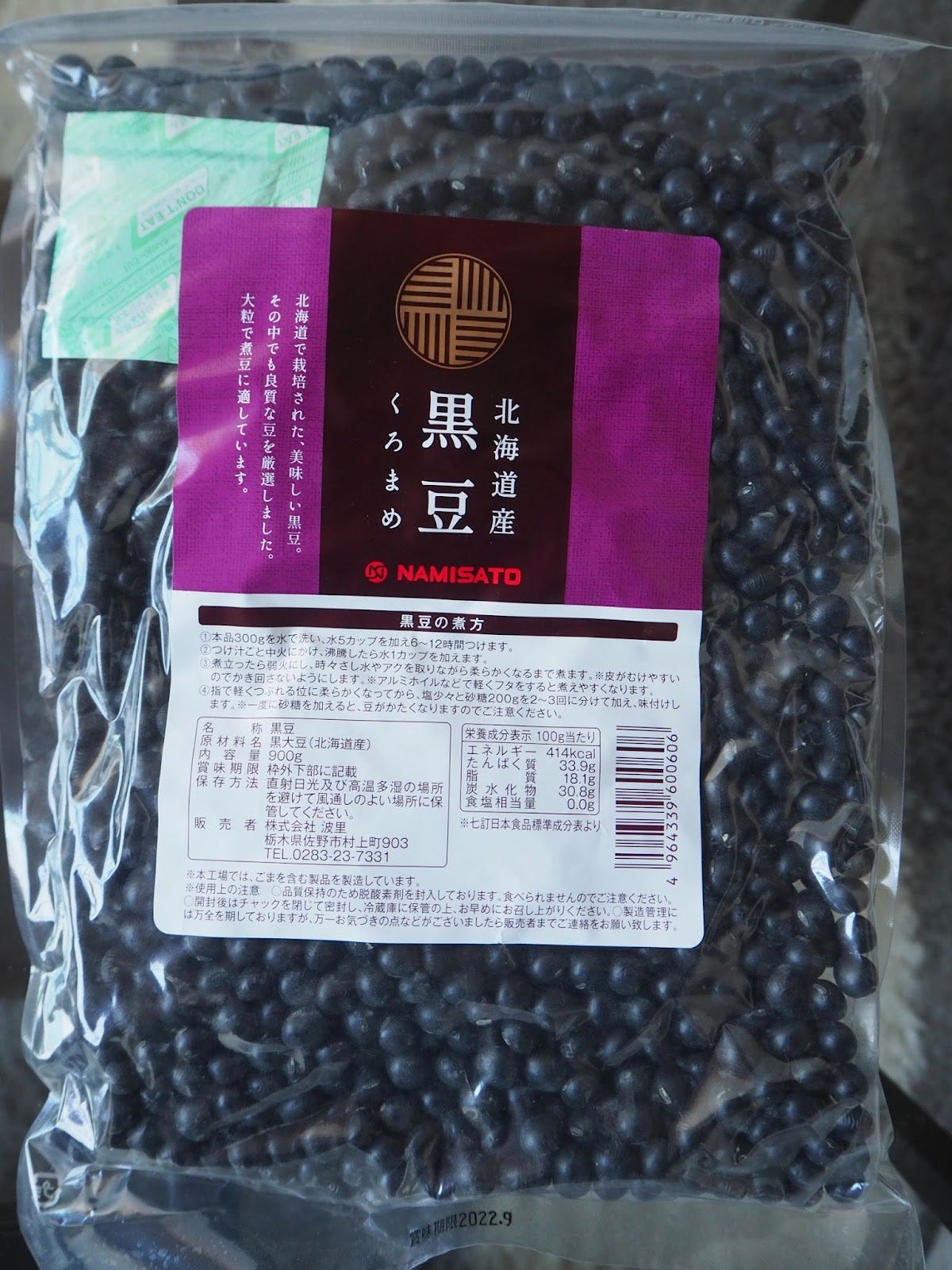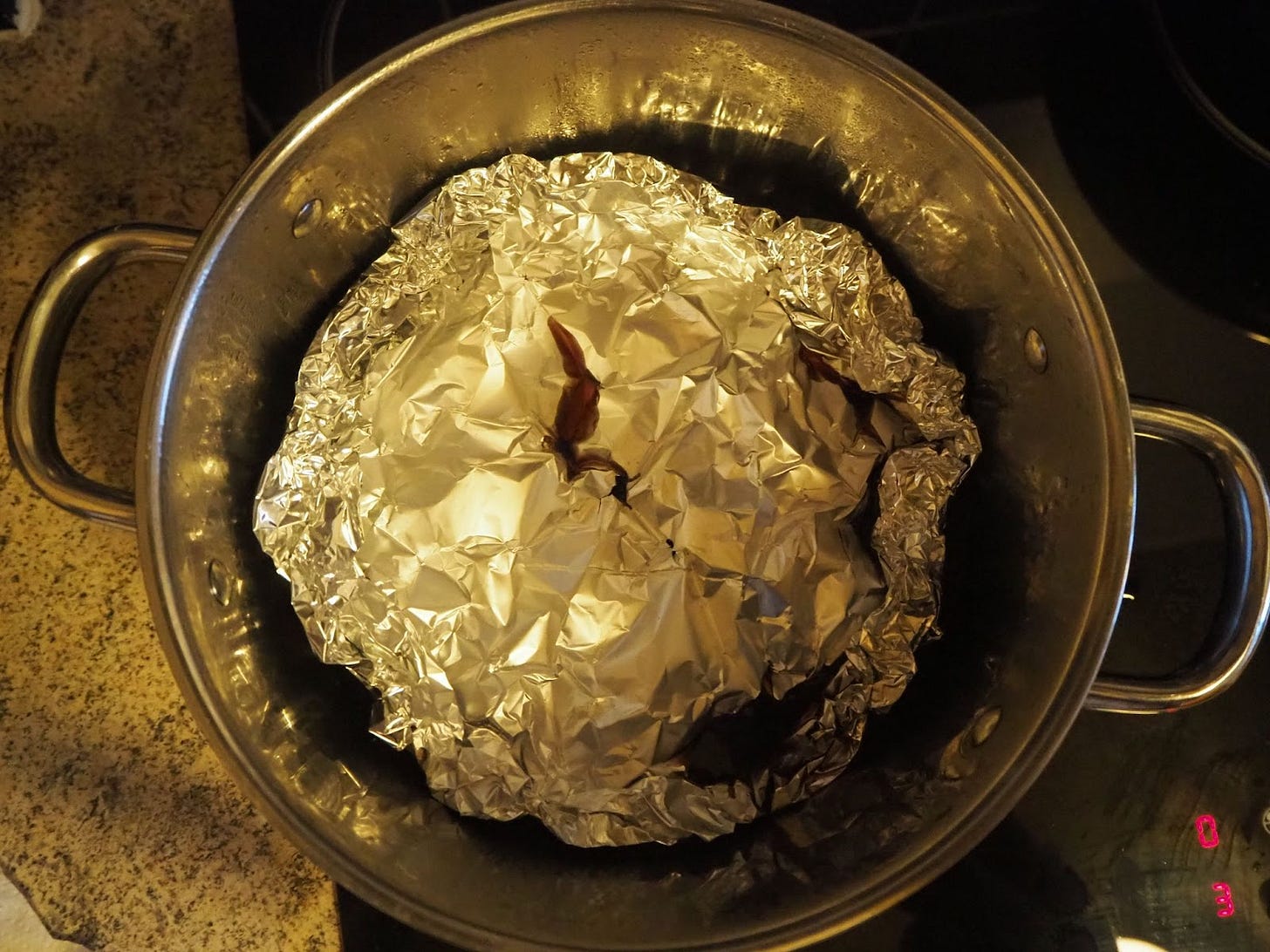Recreating my favorite Japanese New Year’s Dish: Kuromame
A big part of the Japanese New Year experience is the food.
Growing up, I would usually visit my grandparents in Osaka for the New Year holiday. I always loved going because I got ‘otoshidama’, or New Year money, from all of my relatives. It was arguably better than Christmas presents-- receiving envelopes of cash that I could spend on anything was a dream come true.
That was the fun part of New Year’s. The part I didn’t always look forward to was the traditional food eaten on New Years Day: osechi ryori. It’s not exactly the most kid-friendly meal, with things like kazunoko (herring roe), kohaku kamaboko (Japanese fish cake), and tataki gobo (pounded burdock root with sesame).
Now that I’m an adult, I’ve come to realize the beauty and significance of osechi ryori. It is served in beautiful multi-tiered lacquerware boxes called jubako, and each component has a separate meaning.
For example, kazunoko (herring roe), which translates to ‘number of children,’ symbolizes a large, prosperous family. Kohaku kamaboko (Japanese fish cake), which is red and white and has a semi-circle shape, is said to resemble the first sunrise of the New Year. Since gobo (burdock root) grows deep in the ground, tataki gobo (pounded burdock root) represents family ties and strength.
I won’t go into too much detail on the history and different components of osechi ryori, as there is already so much content online (a simple Google search will show you).
In this article, I want to do a deep dive into the one osechi ryori dish that I absolutely loved as a child: kuromame.
I couldn’t get enough of kuromame, or black soybeans. They represent health-- and it is said that by eating the beans, you will be able to work hard in the year to come. I loved the look of the big, glossy beans, their chewy texture, and their slightly sweet taste.
I thought it would be fun to try to recreate my beloved kuromame as I haven’t had osechi ryori in years, and recreating the entire feast with all the different components would be too much of an undertaking. But I figured I could handle just one dish.
After perusing the internet for kuromame recipes, I discovered that not only would I need to source black soybeans (not an easy task in the UK), but I would also need some rusty nails and a cheesecloth.
Apparently, the rusty nails (or anything with iron oxide) have a chemical reaction with the tannin in the beans, which helps the beans turn to a rich black color. How did rusty nails ever end up in a boiling pot of water? Is this one of those accidental mistakes that turned into a surprise success? I never would have thought putting rusty nails in a dish would be healthy or even edible, but I suppose you learn something new every day.
Not having any rusty nails on hand, I decided to just go for the more basic (read: lazy) version and omit the rust.
I found a recipe by Japan Centre that did not call for any rusty nails so I went with that.
The process of making kuromame, I also discovered, is a long one that requires about 16 hours.
The first step was to boil a mixture of soy sauce, water, and sugar until the sugar dissolved. Then, I had to leave the beans soaking in the mixture overnight.
The next morning, I put the pot back on the stove and let it simmer for a few hours. I had to also create a makeshift ‘otoshibuta’ (drop lid) out of aluminum foil. The drop lid is meant to keep the soybeans under the cooking liquid and prevent the beans from getting wrinkles.
The recipe noted that the beans should be simmered for 5-6 hours, but by hour two the smell of something burning began wafting through my apartment.
I checked on the beans and discovered that the bottom of the pot was burning. I left the beans on for a few more minutes but eventually decided to turn off the heat to prevent any more burning.
The beans definitely weren’t as tender as I wanted them to be, but I figured it would be better to salvage what I had than to eat completely burned and inedible beans.
From the outside, the finished product looked great-- it mimicked all the photos I saw online from food bloggers. But biting into it, it had the odd taste of semi-sweet, semi-bitter beans that were slightly too chewy.
After consulting my mother, I realized I was meant to keep adding water and ensure that the beans were always covered by a bit of water. Now that I know where I went wrong, perhaps take two will be better. Who knew cooking beans could be so difficult?
This experience gave me even more appreciation for those that take the time to make osechi ryori than I already had. Although the traditional New Year’s cuisine is not my cup of tea, the next time I’m lucky enough to feast on it I will surely appreciate it a touch more-- especially the deep black, rust-infused, long-simmered kuromame.








